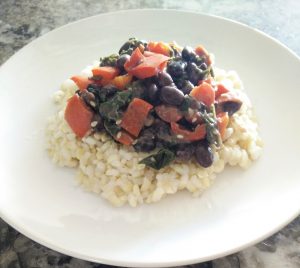When I described what the rhetoric of food meant to me in my midterm learning reflection, I focused on the rhetoric portion of that phrase, rather than the food portion. But the rhetoric of food is a phrase that cannot, or at least should not be broken down and examined as its component words. To me, the rhetoric of food means the surrounding and contained elements of a piece of food writing. This could range from the author’s background to the words that the author writes. The way that the author describes the food is extremely important, as they could be making social of political commentaries that you are not thinking about. For instance, Michael Twitty’s piece that we read as a class was a great example of how food writing can comment on the culture at large. The rhetoric of food is exceedingly complex and connected with a whole host of other genres and topics of writing. These interconnections really need to be taken into account when talking about the rhetoric of food in order to get the best and most complete view of any piece of work.
Author: ewm469
Consider the Favorites
Throughout the course of this class, we got to interact with a variety of different texts. Among all of the required readings, my favorite piece was “Consider the Lobster” by David Foster Wallace. This piece truly represents the complexity of the rhetoric of food. Though it begins as a piece about the Maine Lobster Festival, Foster Wallace quickly shifts the tone of the article from a lighthearted account of the festival to a nuanced and heavy hitting piece about pain and the living experience. Discussing this piece as a class really brought together all of the elements of the rhetoric of food that we talked about throughout the semester, as we talked about Foster Wallace’s depression and suicide, the audience of Gourmet magazine, and the overall themes of the text. Reading this was not only a great exercise of what we learned in class, it was also an extremely complex and compelling piece that reached out to me in a way that the other texts just didn’t.
My favorite piece that I read on my own was “The History of Pho” by Andrea Nguyen. I read this in preparation for my genre conventions paper, when I was thinking about turning a vague vegetarian pho formula that my friend brought back from Vietnam from me into a full fledged recipe. Though I ultimately didn’t write that piece, this article ended up informing my illustrated guide. As Nguyen writes about what pho means to her and the different varieties of pho that she encounters, I could feel my mouth watering and my stomach growling. The way that she expertly connects history, politics, and culture to pho showed just how much food means and why people are so obsessed with it.
Staple Kale and Black Beans
Today I’m sharing a recipe that has been one of my staples in college. It takes all of about 10 minutes and less than $10 to make. Plus, if you follow all
of the ingredient amounts, the recipe usually yields about enough for 4 meals for me. So without further ado, let’s get started!
